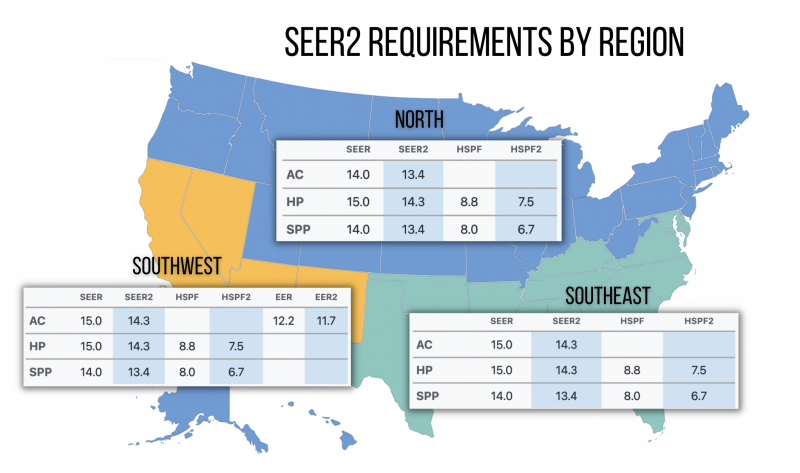Air Conditioning and SEER2, the new Energy Efficiency Standard
What’s SEER and how is it measured?
What’s Different Between SEER And SEER2?
How New SEER2 Regulations Will Affect You Specifically?

The minimum energy requirement can be further broken down by the tonnage of your system. In the South and Southwest United States, the minimum SEER2 rating is outlined below by tonnage.

This affects both DIY installations and installations handled by a professional AC service provider.
The impact of SEER2 regulations on homeowners is two-fold:
1. Cost, and
2. Energy Savings.
On the cost side, SEER2 regulations will increase the purchase price of a new air conditioner or heat pump system as manufacturers must invest in technology to meet the new standards.
However, energy savings can more than offset this cost increase over time. By replacing an old SEER 10 system with a new SEER2 15 system, homeowners can save up to 50% on their cooling costs over the life of the unit as long as they properly maintain their AC system.
In addition, many states and local utility companies offer rebates and incentives to homeowners who purchase energy-efficient systems.
Homeowners must understand these new regulations' implications and ensure their ACs are up to date to promote energy conservation efforts.
Why Does SEER2 Matter?
- These standards will help conserve energy and reduce electricity costs for homeowners over the long term.
- Meeting SEER2 standards may be eligible for rebates or financial incentives from local utility companies or the government.
How Much Will The SEER2 Air Conditioner Save On Utility Bills?
How have Manufactures Adapted to SEER2?
Final Words
Reach out Anytime, We are always here to help!
Thank you for contacting HVAC Home Pros.
We will get back to you as soon as possible.
Please try again later.
Quick & Reliable
We will answer any calls or questions in less than 5 minutes!
Don't be a stranger!
6 Office Park Cir suite 215, Mountain Brook, AL 35223
1201 Powder Plant Rd #7, Bessemer, AL 35022
Air Conditioning Services
AC Repair
AC Replacement
AC Installation
AC Maintenance
Mini-Split Systems
Heating Services
Heating Repair
Heating Replacement
Heating Installation
Heating Maintenance
Heat Pumps
All Rights Reserved | HVAC Home Pros - Air Conditioning Repair and Installation | AL # 22285
